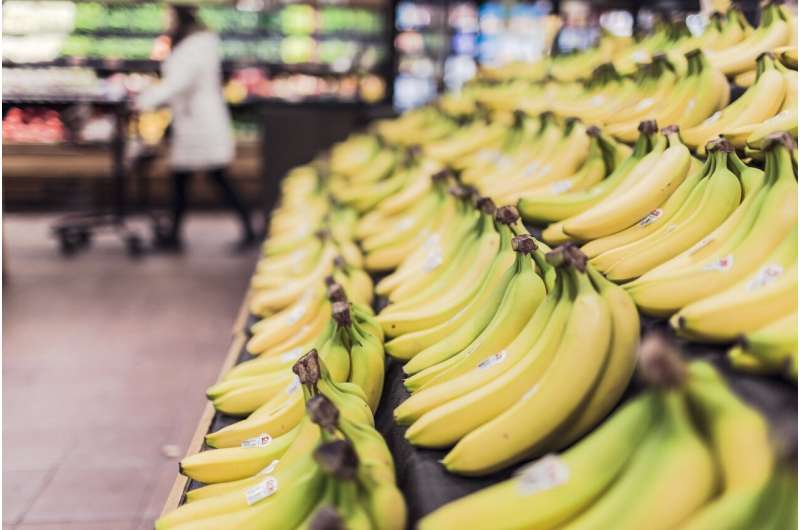COVID-19 made unequal access to food worse, study suggests

When COVID-19 hit, affluent Columbus, Ohio, residents responded by taking significantly fewer trips to large grocery and big-box stores, apparently ordering more online and stocking up when they did go out to shop.
With fewer options available to them, low-income people had to double down on what they had always done: regular trips to the local dollar stores and small groceries to get their family's food.
That's the conclusion of a new study that analyzed traffic to Columbus grocery sellers before, during and after the COVID-19 lockdown.
Dollar stores and small local grocers in neighborhoods housing mostly low-income people of color didn't see as much of a decline in customers during the lockdown as did large grocery and big-box stores, said Armita Kar, lead author of the study and a doctoral student in geography at The Ohio State University.
"Most low-income people still had to shop for groceries in person during the COVID lockdowns and may not have had the economic ability to stock up on food," Kar said.
"They took fewer trips to mid- and high-end grocery stores outside their neighborhood and continued to go regularly to the stores that were nearest to them, which were the dollar stores and local grocers."
The problems faced by poor people during the pandemic lockdown were not new, said study co-author Huyen Le, assistant professor of geography at Ohio State.
"COVID-19 exacerbated the existing problems of unequal access to food for low-income people," Le said.
The study was published online recently in the journal Applied Geography.
The researchers used anonymized and aggregated cell phone location data to analyze 2020 travel patterns to nearly all Columbus area grocery stores (393 in total) during pre-lockdown (Jan 6—March 15), lockdown (March 16—April 19) and initial reopening (April 20—May 31).
The goal was to find out how different kinds of grocery stores were affected by the lockdown and how travel to stores differed between high- and low-income neighborhoods.
Results showed that mid- and high-end grocery stores and big-box food retailers in the city saw their in-person customer levels plunge when COVID-19 lockdowns began, presumably because their mostly affluent clientele could shop online and stock up on supplies, so they went to stores less often.
But dollar stores and smaller independent grocers, particularly in low-income neighborhoods and those housing people of color, saw only a small decline in their customer levels during the lockdown.
When the initial reopening occurred in April, the larger grocery stores and big-box retailers saw their customer numbers recover quickly—with an important caveat.
Most of the returning customers lived in the immediate area, results showed. Customers who used to come from longer distances—often from low-income neighborhoods—did not return in the same numbers, Kar said.
"We believe the transportation options for people in low-income neighborhoods were limited," she said. "Public transit was still less regular, and some may not have been able to combine work and shopping trips as they once did."
COVID-19 exposed many of the inequalities in our food system in a way that made them harder to ignore, said study co-author Harvey Miller, professor of geography and director of Ohio State's Center for Urban and Regional Analysis.
"The rich and poor were mostly shopping at different food stores before COVID-19, and those differences became even more stark when the lockdown came," Miller said.
And these results point to the need to support better food shopping options for low-income people living in food deserts, Le said, so they don't have to rely on dollar stores.
"Dollar stores mostly offer packaged and highly processed foods that aren't healthy," Le said.
"Policymakers should examine ways to provide better shopping options for people in low-income areas, so they have better access to healthy foods."
No comments:
Post a Comment